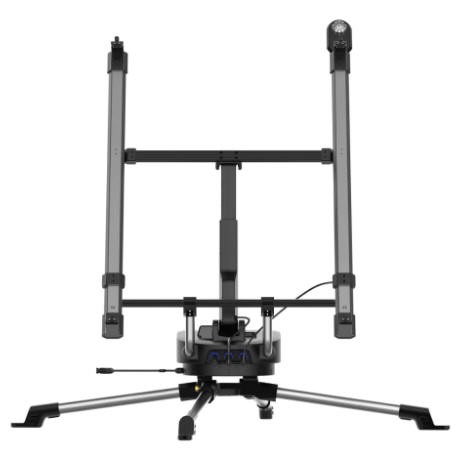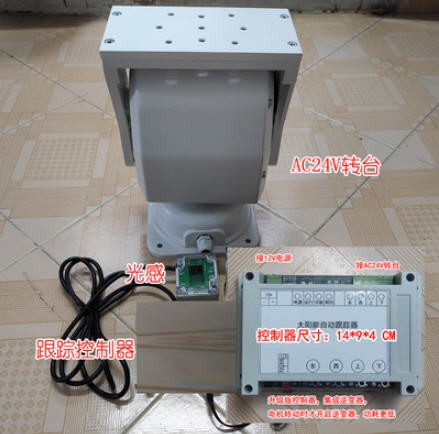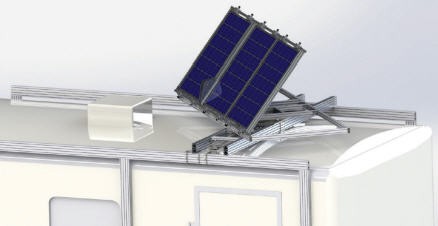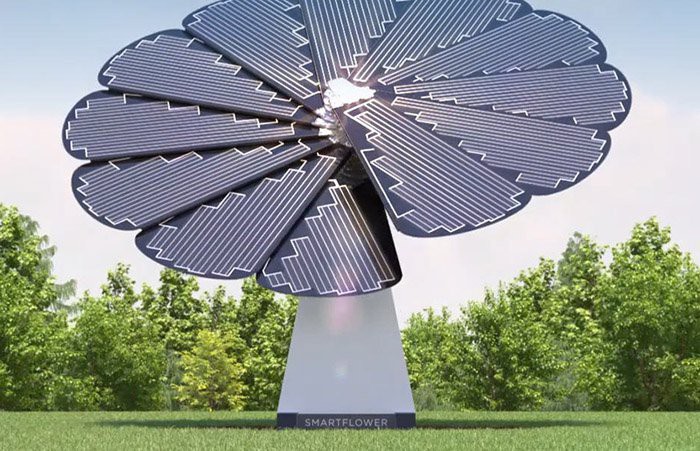Having a fully working solar panel system that I designed for less than 55 USD, I wondered if there was a business model for such a system.
The critical device is obviously the solar tracker as we can already find cheap MPPT controllers everywhere on internet !
I used google to search for MPPT controller 200W and got plenty of results for less than 100USD.
So, IMHO, trying to industrialize my MPPT controller would be a waste of time and money! We can keep my design as it is for hobbyists who really want something cheap and "Android controlled".
On the other hand searching for solar panel tracker mobile gives far less results and leads to very expensive systems.
For instance the best I found was the Ecoflow's solar tracker.

It is a very well designed system, very versatile but extremely expensive (3399$). IMHO, the return on invest for a buyer would last for decades... considering that you will gain 30% to 40% (in average) more power from your 100-200W panel ... See below for ROI evaluation.
A few other solutions exist on the chineese market accessible via alibaba. Most of them are for "big panels" and not intended for mobile systems. I even found "kits" around 700$ on aliexpress

I found also a clever Mobile Solar Tracking System design but with no follow on for industrialization ...

And I wouldn't finish this survey without mentionning the really beautiful concept proposed by SmartFlower
I want it !

But once again, the commercialization of this product by french electricity provider (EDF) was a failure... Product too expensive, mechanical parts fragile, not adapted to windy area... The story is not finished yet the Autrian company Smartflower still exists!
Industrializing my solar Tracker
My tracker has now almost 4 months of operation (of course not daily but regular). I know quite well its weaknesses and strengths. Some of the defects have been corrected during the prototype design phasis but a few other remain !
main cons
light weight: this is a real specification but can be considered has a drawback... This system cannot sustain high wind conditions, even if you fix the body legs into the ground...
We have to cope with this if we want a portable system... and a cheap system
waterproof: currently my electronics is not packaged into a waterproof case. It should be done for a commercial product. The panel must sustain rainny conditions.
main Pros
portable: the solar tracker is quite compact and very light. It is perfect to be put into a van and to be used everywhere in the fields.
easy to setup: using such a system should be easy. I mean, no complex tuning and fully automatic operations. Set it and forget it. My design allows to be deployed in less than 5 minutes. The companion App is handy to position the panel and to setup time and location into the tracker.
accurate: position should be fairly acurate. Tracking should work even in cloudy conditions. A no sensor system relying only on computations of solar position is a must.
low power consumption: the system should eat as less energy as possible. This is the case with my design where motors only draw current when in motion (~5s every 10 minutes).
failsafe: the system is automatic, it goes to morning position every night. It won't move if a low power is detected and resume operation when power will resume. It can connect to Wifi, Bluetooth, or rely on internal RTC clock. So it does not need internet to work although ntp time synchronization is possible and automatic if internet is available. In cloudy or shaded conditions the tracker will continue its job so that the panel is always pointing to the sun (when it is shinning !).
and last but not least
cheap: This is a key concern. Return On Invest (ROI) won't be achieved if the solar tracker costs too much money.
what is "too much" ?
Well, expect a 100W panel to cost around 150USD including cheap MPPT controller. Expect this system to produce 60W per day during 7 hours. Energy produced will be 60*7 = 420Wh per day.
Expect a solar tracker to increase this production by max 40%. You will get 168 Wh more per day.
Assume a price of energy at 20 cts per kWh. 168 Wh will give you a daily bonus of .168*20 = 3.36 cts... Which is not a lot!
- If the tracker costs 100$ you will need 100/0.0336 = 2976 days... more than 8 years before ROI.
- if the tracker costs 50$ you will need 4 years.
So YES price is a key factor when designing a solar tracker. The tracker should not cost more than 1/3 of the price of the solar panel system to have a ROI consistent with the ROI of the panel. (30% gain of power means 30% cheaper price to have the same ROI duration).
Industrializing my design would be rather complex to balance the industrialization costs... Target selling price should be in the range of 50 USD. for such a light 100W panel.
Moreover: Is there a market for small solar tracker ? Probably yes if the price is very very low. Increasing harvest of energy is great when place is small (van, campers...). Expensive systems seems to be discontinued (try to buy Ecoflow's solar tracker --> sold out)...
Electronics itself is cheap and should remain cheap, software is qualified and open. Most of the price will come from the mechanical parts and the motors.
Amazing coincidence
While writing this log, my project got popularity on this blog. I did enjoy most of the comments as they were inline with the content of this log!
I would like to put the stress on Bret's comment which I consider extremely relevant:
"A tracking system is intended to increase the output of whatever panel is used and the design is NOT limited to just that one size of panel, it can be adapted to ANY size panel or array ! So once a system is working, take that design and mod it to work to move whatever array you wish to move.
/.../ It puts the output at near peak as long as possible, instead of 5 hrs. it moves to 9 average which is almost double, in some place it can be longer, like 10 to 12 or even 15. Plus it requires less material and space as far as the solar system not counting the tracking system."
So yes my design was intented to move my small and cheap panel and to apply MPPT to charge my bats. This design is at the very minimal cost you can imagine, but with known limitations...
If you scale up to a bigger panel, you will have to improve the mechanics, the motors, the actuators... while keeping this equation in mind : solar tracker price shouldn't be more than 1/3 .(panel + controller) .
But in any case, the software and electronics can be fully reused. Everything is Open source and Open hardware. Take benefit of this, read the code, update it to your needs. It should be simple!
And don't forget that the licencing model allows you to do what you want (use, modify, distribute) provided that you go on distributing the (modified) source code together with the system using it.
 JP Gleyzes
JP Gleyzes
Discussions
Become a Hackaday.io Member
Create an account to leave a comment. Already have an account? Log In.